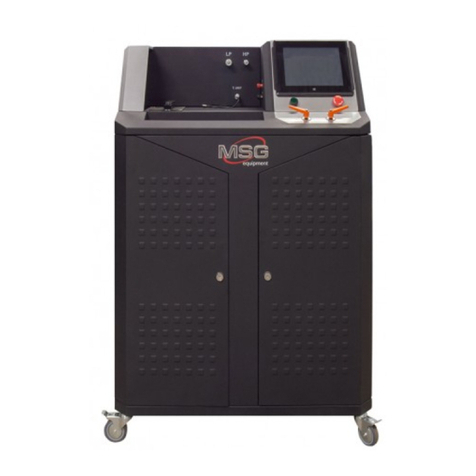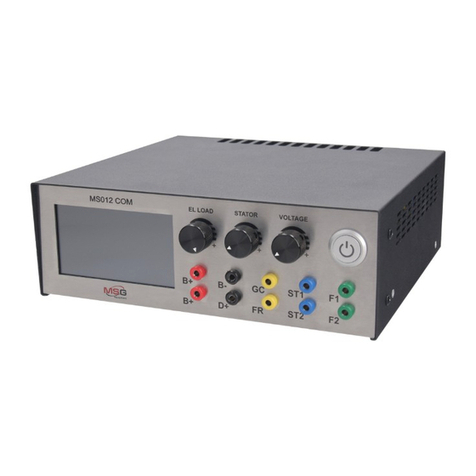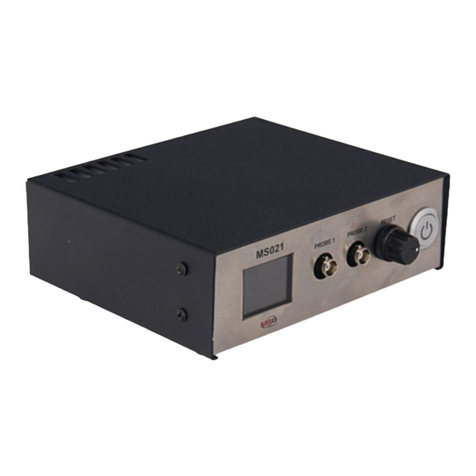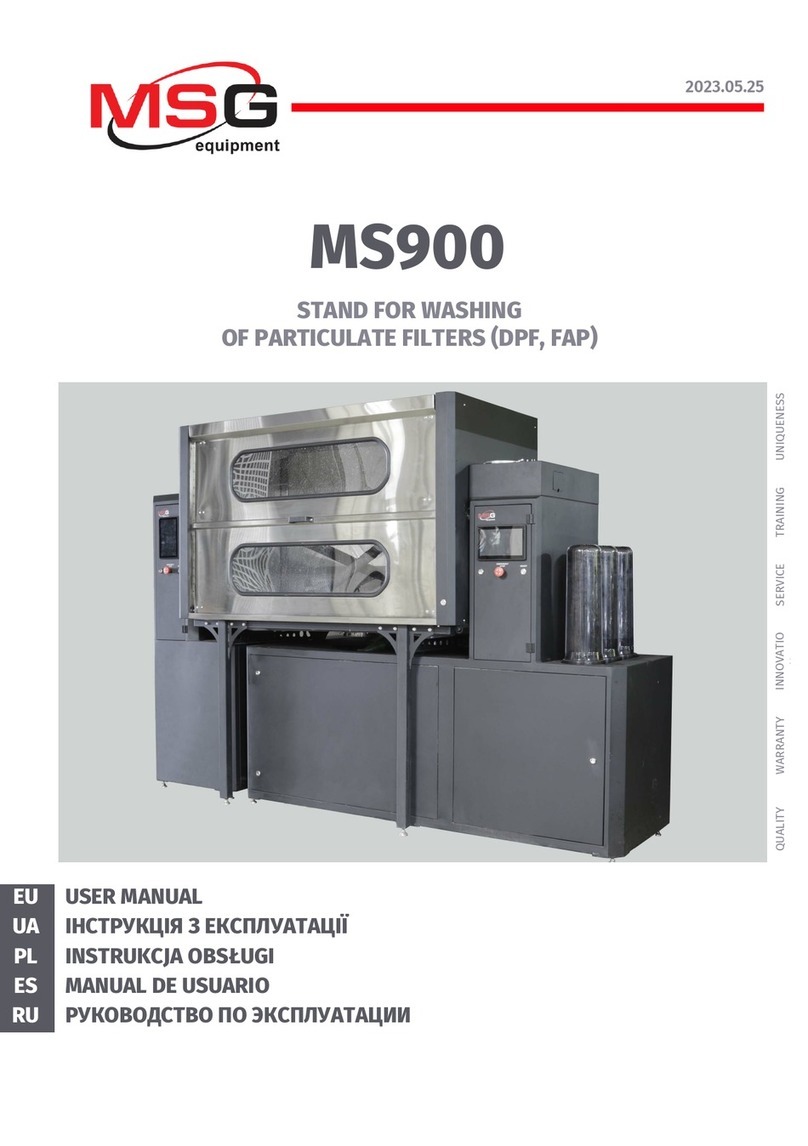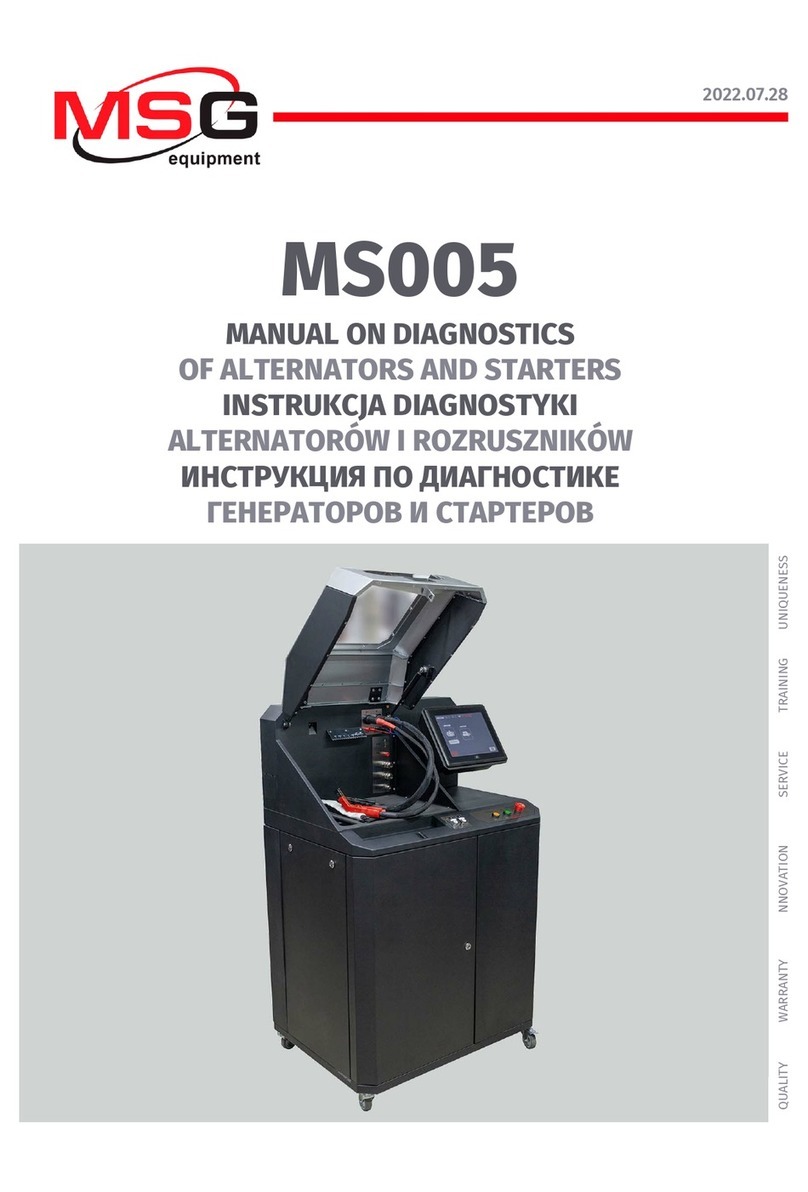
User Manual - Test Bench MS111
English
INTRODUCTION.......................................................................................................................................................2
1. PURPOSE.............................................................................................................................................................. 2
2. TECHNICAL CHARACTERISTICS.......................................................................................................................3
3. COMPLETE EQUIPMENT SET............................................................................................................................4
4. TEST BENCH DESCRIPTION............................................................................................................................. 5
5. INTENDED USAGE...............................................................................................................................................8
5.1 Safety regulations......................................................................................................................................9
5.2 Pre-starting procedures........................................................................................................................10
5.2.1 Equipment installation...................................................................................................................10
5.2.2 Test bench lling..............................................................................................................................11
5.2.3 Connection of cables to the test bench terminals................................................................12
6. TEST BENCH MAINTENANCE..........................................................................................................................13
6.1 Cleaning and care....................................................................................................................................14
6.2 Condensate draining..............................................................................................................................14
6.3 Replacement of lters in the test bench hydraulic system.......................................................15
6.4 Firmware update..................................................................................................................................... 19
7. MAJOR FAULTS AND TROUBLESHOOTING.................................................................................................19
8. DISPOSAL OF THE EQUIPMENT.................................................................................................................... 21
CONTENTS
1












